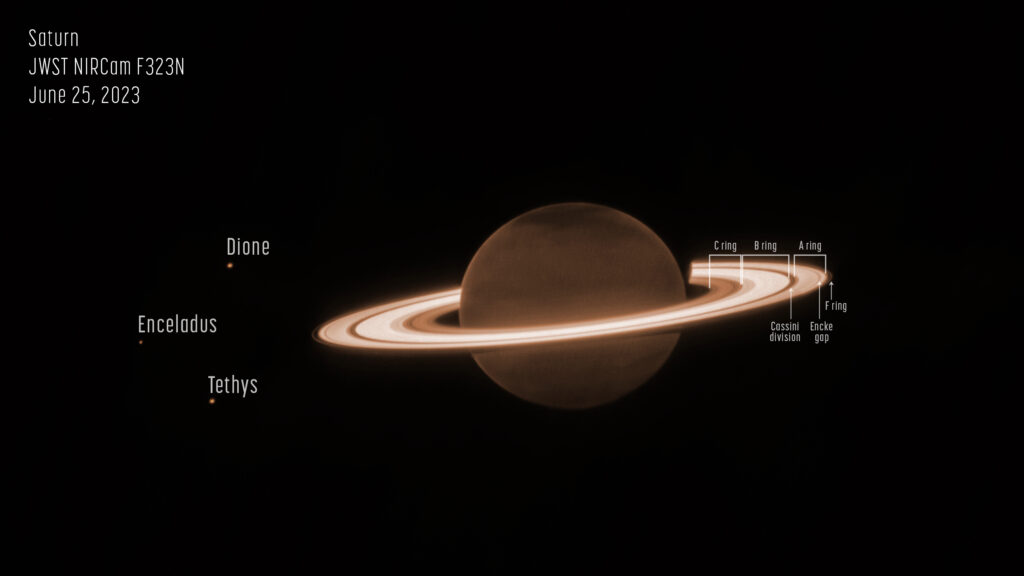

The National Aeronautics and Space Administration (NASA) unveiled the first official photograph of Saturn taken by the James Webb Space Telescope (JWST).
The stunning image, captured on June 25 using the telescope's NIRCam (Near-Infrared Camera) instrument, showcases the ringed planet in a whole new light and has already captivated researchers, according to NASA officials.
The photograph reveals a distinctive appearance of Saturn, as the planet itself appears remarkably dark in the infrared wavelength observed by the telescope due to methane gas absorbing most of the sunlight in the atmosphere.

However, the icy rings remain relatively bright, resulting in the unique visual presentation of Saturn in the JWST image.
This mesmerizing snapshot was part of a 20-hour-long campaign dedicated to observing Saturn with the JWST.
While the rings of Saturn steal the spotlight in the photograph, three of Saturn's 145 known moons—Enceladus, Dione, and Tethys—are also prominently featured.
The JWST, designed to unveil the secrets of the universe's earliest stars and galaxies, demonstrates its versatility by providing a close-up view of objects within our own solar system.
The telescope has previously captured breathtaking images of Uranus and offered magnificent perspectives of Jupiter and its polar auroras.
With its science operations commencing last summer after its launch on December 25, 2021, the $10 billion observatory is only beginning to reveal the wonders of the cosmos.




